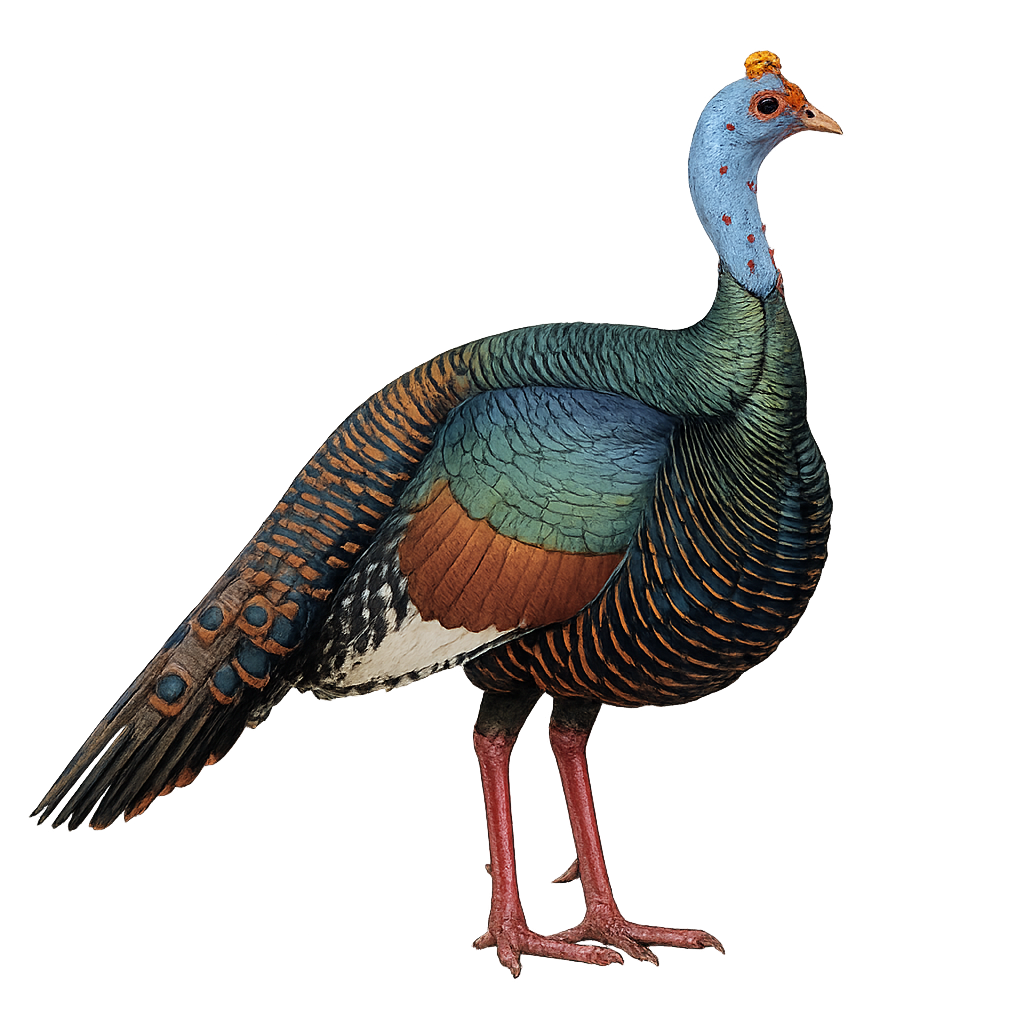Your wildlife photography guide.
Explore the ocellated turkey in detail, study its behavior, prepare your shots.
Where to observe and photograph the ocellated turkey in the wild
Learn where and when to spot the ocellated turkey in the wild, how to identify the species based on distinctive features, and what natural environments it inhabits. The WildlifePhotographer app offers tailored photography tips that reflect the ocellated turkey’s behavior, helping you capture better wildlife images. Explore the full species profile for key information including description, habitat, active periods, and approach techniques.
Ocellated Turkey
Scientific name: Meleagris ocellata

IUCN Status: Near Threatened
Family: PHASIANIDAE
Group: Birds
Sensitivity to human approach: Suspicious
Minimum approach distance: 10 m
Courtship display: March to May
Incubation: 28-30 jours
Hatchings: April to June
Habitat:
Tropical forests, savannas, wetlands
Activity period :
Primarily active during the day, with peak activity in the morning and late afternoon.
Identification and description:
The Ocellated Turkey, Meleagris ocellata, is a species native to the tropical forests of the Yucatán Peninsula. It is known for its iridescent plumage with metallic hues and eye-like spots on its tail feathers. Males have a bright blue head with red and yellow caruncles. Smaller than the North American Wild Turkey, it is omnivorous, feeding on seeds, fruits, insects, and small animals. The Ocellated Turkey is a social bird, often found in small groups outside the breeding season. Its population is declining due to hunting and habitat loss.
Recommended lens:
400mm – adjust based on distance, desired framing (portrait or habitat), and approach conditions.
Photography tips:
To photograph the Ocellated Turkey, aim for early morning hours when the light is soft and enhances the metallic sheen of its plumage. Use a telephoto lens of at least 400mm to capture details without disturbing the bird. Be patient and discreet, camouflaging yourself if possible to blend into the environment. Pay attention to its behavior to anticipate its movements and capture dynamic shots.
The WildlifePhotographer App is coming soon!
Be the first to explore the best nature spots, track rutting seasons, log your observations, and observe more wildlife.
Already 1 432 wildlife lovers subscribed worldwide

